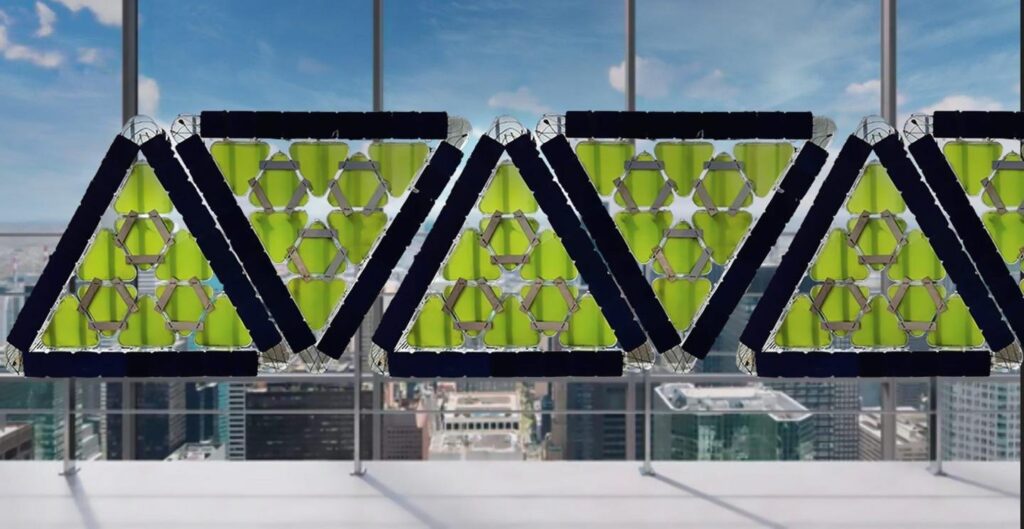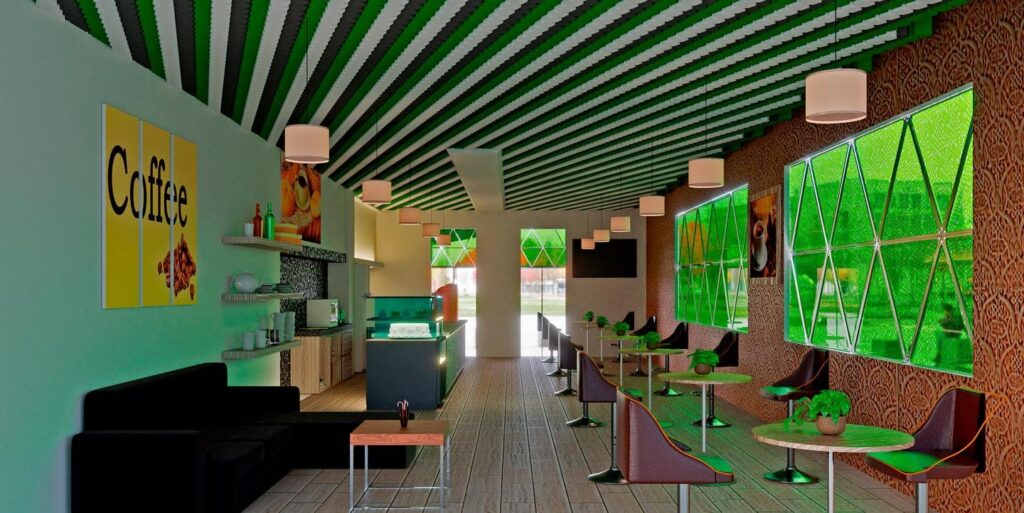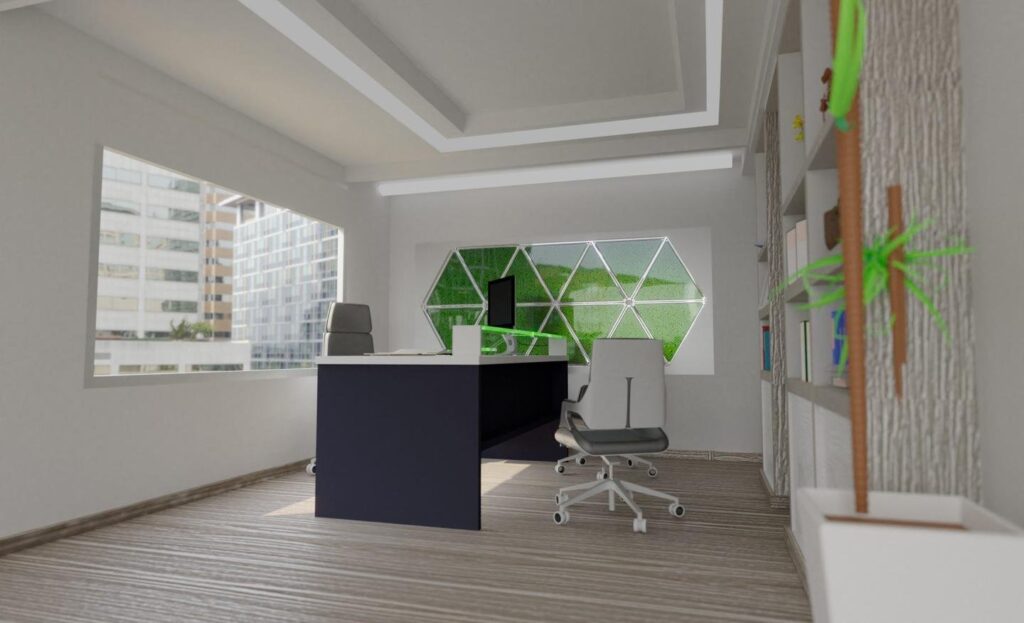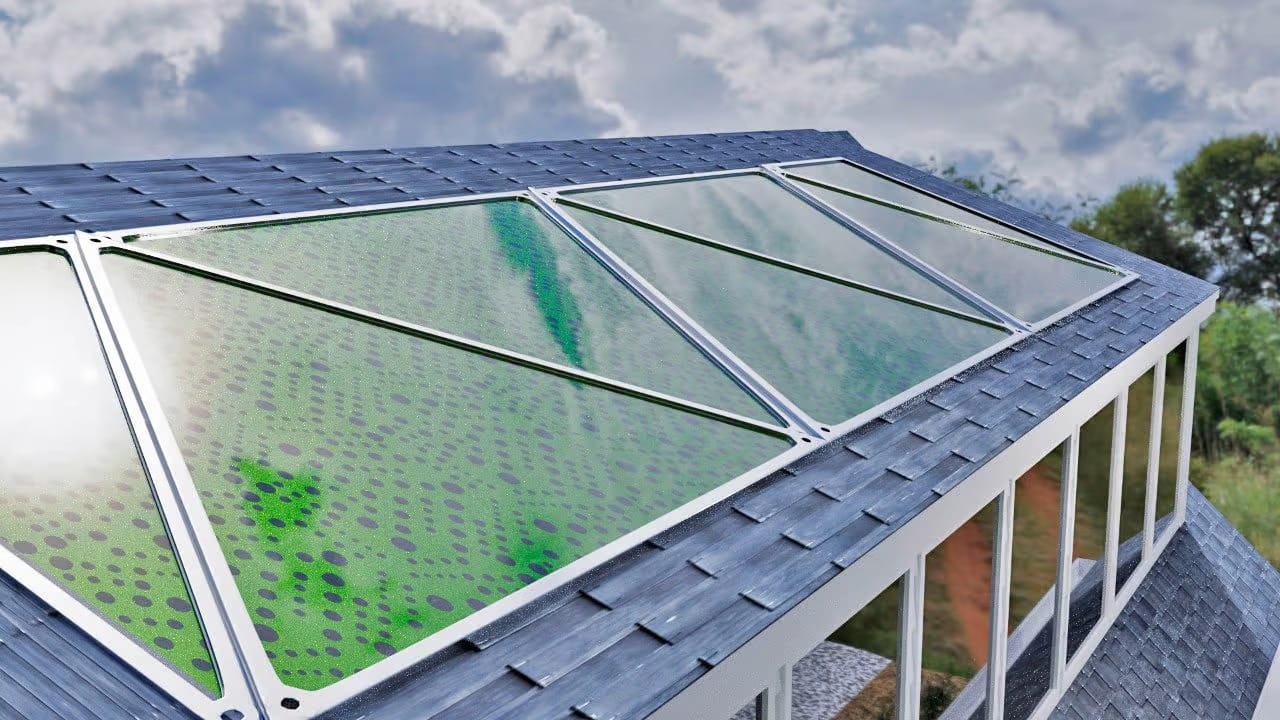The idea of using building windows as part of a sustainability exercise is not new. In 2020 I told you about AuREUS, a concept based on windows made from food waste and capable of converting light into electricity.
The Mexican startup Greenfluidics he took a step forward. Its bio windows (colored green for the biomass contained within them) are operational and truly dynamic. What are they doing? They take a stream of carbon dioxide, captured from what would otherwise be an emissions source, and pass it through water soaked in selected strains of seaweed. During the journey, actual photosynthesis takes place, with the algae increasing their mass and generating oxygen. For every kilo of algae inside these bio windows, two kilos of CO2 will be captured. Not bad.

Power of nanotechnology
The idea isn't bad, but like all things it can be improved. And this is where nanotechnology comes in. Miguel Mayorga, CEO of Greenfluidics, described in an interview how their bio windows have been enhanced.
The system is double-sided: on one side, the algae. On the other hand, water mixed with (recyclable) carbon nanoparticles that increase the thermal conductivity of the liquid. This translates into two possibilities: you can capture the heat and turn it into energy with a thermoelectric generator, or you can harvest the algae and turn it into biofuel for the building's systems.
Now all that remains is to give them a more attractive color (it may surprise you, but Greenfluidics was founded in 2018 and is working hard to give this very useful invention a "marketable" aesthetic appearance).

But I also have other questions
You will forgive me, but I would like to anticipate the requests of the readers, always stimulated with many inventions, but disappointed by the fact that only a small part of them finally finds a way to be applied.
For this I express some reservations here: ok, I trust an old feasibility study already published in a scientific journal (here it is, for those who have time to read it), but I still have some questions left.
How long will these bio windows last? How often should they be cleaned, and how? Could algae clog pipes and heating systems? The green light coming through gives you a headache (okay, they're working on that). Do they only work in winter? What happens in summer? What will be the actual energy and economic savings of such a solution?

Bio windows to the future
In summary: CO2 capture is one of the topics of the day, okay. But it still doesn't appear on the balance sheet of a construction company. We will need to quickly (and well) get out of these muffled test environments and these renderings with Photoshop to really make a difference.
I fear that this technology will end up falling into the "too complex, too expensive" category, but I will be happy to be wrong and I wish Greenfluidics all the best anyway. Que viva Mexico!


